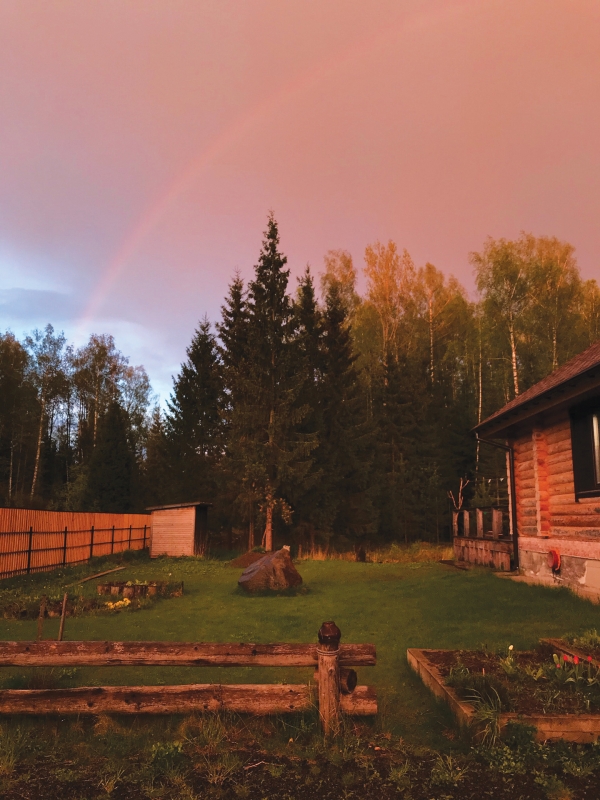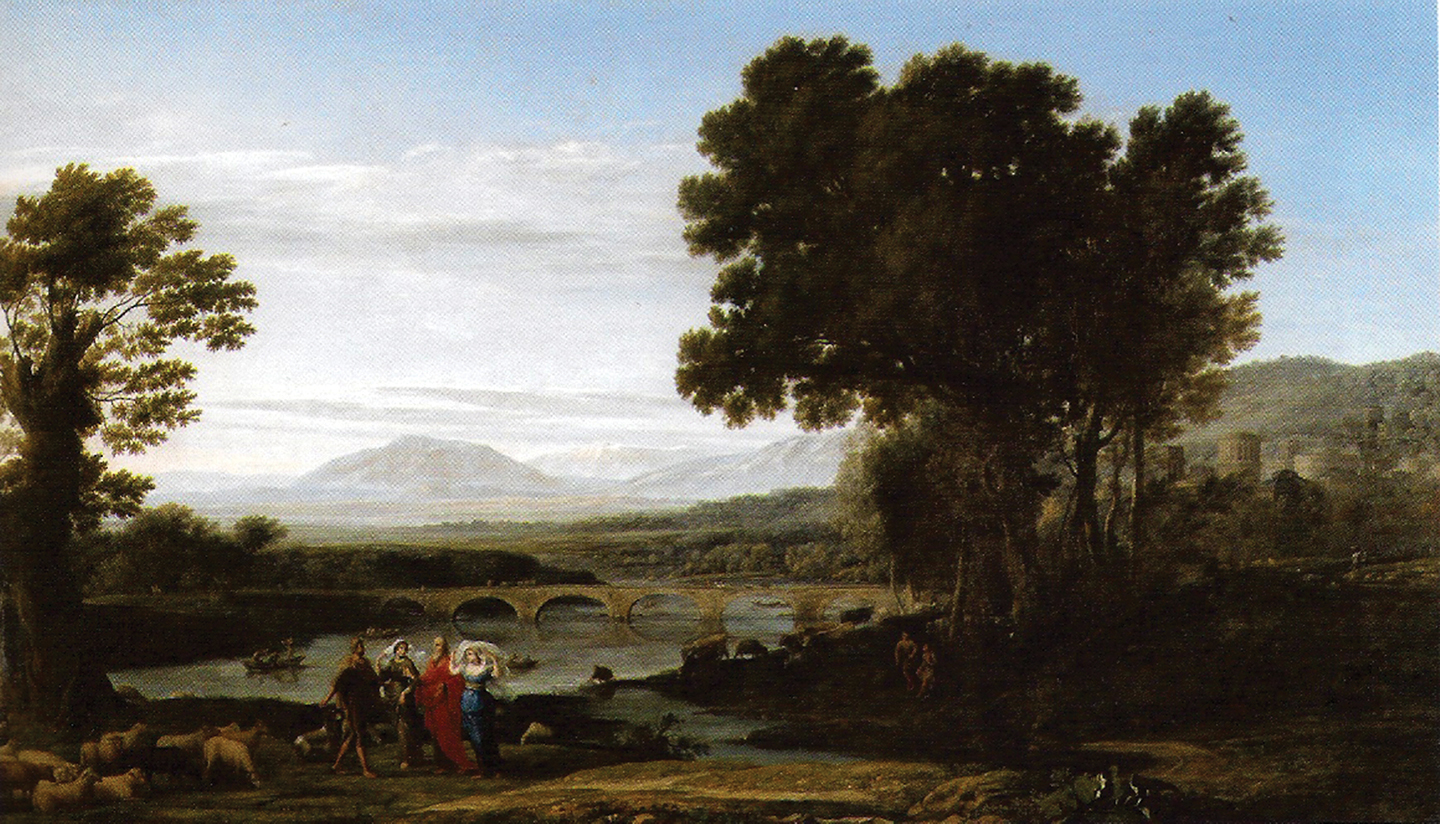
Setting boundaries without blame or shame creates more room for healthy communities
By the Rt. Rev. Anne Hodges-Copple
One of my favorite storylines in the Old Testament is the Jacob cycle, Genesis 25-35. Jacob, son of Rebecca and Isaac, is truly a rascal. To put it nicely, Jacob is a trickster. He blackmails his brother, Esau, into giving up the birthright of a firstborn for inheritance. With his mother’s help, he deceives his blind father and receives the patriarch’s blessing intended for Esau. Jacob even uses chicanery to take his wives, Leah and Rachel, away from their father (and Jacob’s uncle), Laban. After many years working for his father-in-law, who proves to be a trickster himself, Jacob contemplates a clandestine escape in order to return to his family back in Canaan.
Jacob is not positive that life will be better back on the other side of the River Jabbok, where it is likely his brother is still carrying some bad feelings. But he is ready to escape the treachery of Laban. To paraphrase The Clash’s classic question, should he stay or should he go? With potential trouble (possibly double) on either side, it seemed a no-win situation, so Jacob chooses what he perceives to be the lesser of two evils.
Jacob gets only so far before he is run down by an angry Laban. Yet, instead of a violent eruption at this bitter wilderness encounter, the two men create an agreement to go their separate ways. They make a covenant to depart on terms of mutual concern for the other’s well-being. “May the Lord watch between me and thee while we are absent one from the other,” says Laban to Jacob, in words that have come to be known as the Mizpah. (Genesis 31:49) This moment, as well as this place, is marked with a pile of rocks, a cairn, as a lookout point—or mizpah in Hebrew.
MUTUALLY ASSURED WELL-BEING
Let’s be clear: This is not a “Hallmark moment” of reconciliation. This is not given as a loving benediction between two people who will miss one another. Their covenant is an agreement between two men connected as family by law and by blood, as well as by “bad blood.” Throughout their relationship, each trickster gave as good as he got. Each had abused the other in various power struggles over the years. This is not a fond farewell, as it is sometimes used at the end of a religious service. Each party does realize, maybe reluctantly, that the well-being of the one is tied to the well-being of the other.
What they realize is that what they have in common is more important and more valuable than their differences. They both love Leah and Rachel, one as a father and one as a husband. They both love the children of these marriages. (Monogamy had not yet taken complete hold among the heirs of Abraham and Sarah, and this took place long before Yahweh gave the commandments to Moses.) They both understood that if they couldn’t trust each other, they would keep a respectful distance and place their trust in God to hold the other accountable for the well-being of the generations to come.
Rather than departing as enemies under the threat of mutually assured destruction, they departed with a hope, consummated with prayer, for mutually assured well-being. In other words, the prosperity of one is in the interest of the other—no matter the past causes of enmity. They sought a common life, a higher ground—albeit at a distance—that was more important than the immediate and selfish interests that could easily turn to ruin and destruction.
So two kinsmen who could not live in proximity created a mizpah where a boundary is not a wall but a blessing. They built a cairn to mark a turning point away from destruction and allowed distance where, perhaps, over time, healing might occur. They prayed to a power beyond their own. They implored God’s vigilance to provide well-being as well as protection as a form of accountability.

[Image: A River Landscape with Jacob and Laban and His Daughters by Claude Lorrain (1604-1682). Public domain]
HOLDING SPACE FOR DIFFERENCE WHILE SAFEGUARDING UNITY
I wonder if there may be an art to creating a mizpah, a place where we stop and ask for God’s help when journeys need to diverge but higher values might still converge at some point in the future. I wonder if we could better see and appreciate the art of marking the times we need to stop, acknowledge a change in circumstances and, by new agreement, find a new way forward, sometimes together and sometimes apart, but never apart from God’s providence and protection. Where are the places we need to let go of our desire for control and personal satisfaction and let God do something new?
There are numerous examples of ways humans create a defined space between parties in order to facilitate some form of coexistence of mutually assured well-being. We can think of happy examples as well as crushingly sad examples. In marriage, two become one in a sacramental sense—two distinct people are a new entity as a result of their holy union. Even in marriage, though, the couple has to create agreements and understandings necessary for the healthy spaces to operate in a way that is beneficial to all.
We need and depend upon agreements to guard and protect unity as well as provide defined space where parties agree to “steer clear,” so to speak. Negotiating terms for such agreements can be as romantic as a proposal for engagement leading to marriage, as devastating as a divorce or as destructive as one country’s decision to invade another. These agreements are marked in all kinds of ways. Wedding rings are outward and visible signs of a particular set of commitments that include two and, by definition, exclude others from particular claims. Borders of national sovereignty exist within a world that also exerts the existence of universal human rights. One country may claim a concern for the well-being of the residents of another country, but is compelled to accept certain limitations on defending or pursuing those rights.
No one is immune to the need for boundaries, whether big or small, for those markers can pave the way for health and well-being. They provide clarity and create the space for differences to be explored and commonalities to be found. They become especially important when differences like culture, tradition and beliefs come into play.
Not even the Church, which dwells in the space that seeks to draw closer to God and follow the ways of Jesus, can exist without markers and boundaries. The Anglican Communion has its own complicated history of creating a distinct and multifaceted space, within the one, holy, catholic and apostolic church. The Communion now has 40 provinces. Some provinces are composed of one single country, like Nigeria, with 20 million Anglicans and 161 dioceses. Some, like The Episcopal Church, which contains 120 dioceses, reach into 20 countries, from Taiwan to the United States to Colombia to Episcopal parishes in the Convocation of Episcopal Churches in Europe. You can bet with an expanse like that, there are differences of opinion on a variety of subjects. How do we maintain unity and respect boundaries within such a diverse communion, even when divergence among us creates pain and, at times, ruptures?
We stay in relationship, we create meaningful space for dialogue, and we stay mindful of the marks of our mutual well-being as defined in our baptismal vows.
At our baptism, we are “marked as Christ’s own forever.” That means we are forever bound together, even where we have profound differences. I think our Anglican Communion has been preserved by the grace of God because, like Laban and Jacob, we are able to create a space for difference while remaining committed to a higher ground of mutual well-being for those generations here and now and for those yet to come. This commitment to safe space is created by mutual agreement to pray for the well-being of the other even while continuing to respect some marks of separation and mutually agreed upon boundaries of behavior.
As Anglicans, we have some markers to help preserve as well as strengthen some defined space for Anglicans within the larger body of Christ also known as the Church. There are four primary principles that form a basis for continuing life together as a world-wide communion. Sometimes known as the Lambeth Quadrilateral, these pillars (or cairns would be a good image) are:
- Holy Scripture, which we believe to contain all things necessary for salvation;
- the Creeds as foundational statements of our faith;
- the historical episcopate as an essential expression of apostolic connection to life in Christ and
- the Holy Sacraments as the means of abiding in the Divine Life of God.
I believe the mutual adherence and commitment to these pillars of the faith create a generous space of conversation, discernment, discovery and transformation for the continuing life of the Anglican Communion, as well as many other partners in the ecumenical councils of the Church. I have experienced it. Over the last six months, I have been in Zoom conversations with bishops from the Southern Cone of South America, Pakistan, Canada, Kenya and the United Kingdom, all moderated by a wise priest in Jerusalem. While we have some significant points of divergence, our deepest commitments were to stay engaged, listen with humility and build relationships. We found great energy and renewal in our Bible studies, identifying points of common purpose. This was particularly true in conversations about evangelism, climate change and empowerment of the laity. Absolute agreement is not required to be in communion. Our life in Christ, empowered by baptism and formed by the Baptismal Covenant, is stronger than what divides us. In the words of St. Paul, “As it is, there are many members, yet one body. The eye cannot say to the hand, ‘I have no need of you,’ nor again the head to the feet, ‘I have no need of you.’” (1 Corinthians 12: 20-21)
BOUNDARIES NEED NOT BE BARRIERS
Setting good boundaries of behavior also creates space for good neighbors to have hard and necessary conversations. Difficult conversations are happening (and need to happen) all over our world and certainly close to home. Healing trauma requires hard conversations. Preventing war requires hard conversations. Dismantling racism and related forms of systemic discrimination requires creating safe spaces to tell the truth, listen carefully to the life experience of the other, find a common moral ground for seeking justice and repair the breech.
Our own diocesan program, Dismantling Racism: Reclaiming our Baptismal Covenant, and the curriculum known as Sacred Ground are great examples of processes for creating safe space for hard conversations without shame or blame. I have come to believe that good boundaries in all kinds of situations actually create the conditions for us to draw closer. Paradoxically, good boundaries provide more space of one kind and draw us closer to the heart of Jesus. Boundaries are not walls or divisions. They are not barriers. Rather, they can be an expression of love.
“From earth’s wide bounds, from ocean’s farthest coast,” there is no limit, no boundaries to God’s love and mercy, “where a wideness in God’s mercy” gives us all the room we need to keep to repent and return to the work of Becoming Beloved Community, loving God and loving our neighbors with all our heart, soul, mind and strength.
The Rt. Rev. Anne Hodges-Copple is the bishop suffragan of the Diocese of North Carolina.


